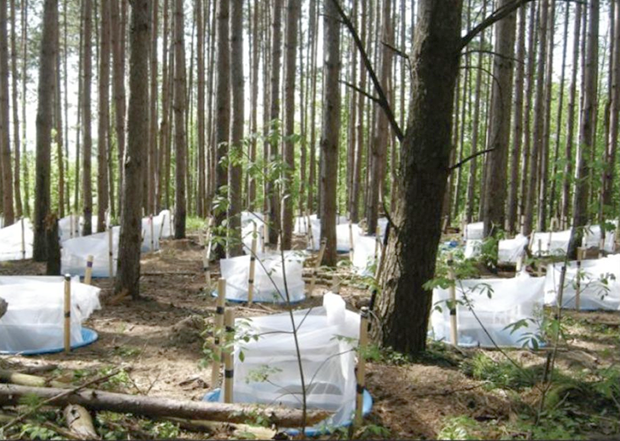Mutualism between co-introduced species facilitates invasion and alters plant community structure
Latest research from Frederickson lab featured in the news!
The Frederickson Lab studied a possible case of invasional meltdown involving interactions between an invasive ant, the European fire ant (Myrmica rubra), and an invasive plant species (Chelidonium majus). The work was spearheaded by Kirsten Prior (Postdoc, Dept of Biology, U. of Florida, Prof Palmer’s lab), Jennifer Robinson, Shannon Meadley Dunphy (MSc student, Dept of Eco & Evo Bio, U of Toronto), and Associate Professor Megan Frederickson (Dept of Eco & Evo Bio, U of Toronto). The study is published in the Proceedings of the Royal Society B.
Prior, K. M., Robinson, J. M., Dunphy, S. A. M., & Frederickson, M. E. (2015). Mutualism between co-introduced species facilitates invasion and alters plant community structure. Proceedings of the Royal Society B: Biological Sciences, 282(1800), 20142846.
The study conducted at the Koffler Scientific Reserve at Jokers Hill used replicate mesocosms of 4 plant species (3 native, 1 introduced spring wild flower) to investigate the interaction between ants (the invasive fire ant vs. native ants) and seed dispersal.

Ant-plant mesocosms were set up in the field at the University of
Toronto’s field station, Koffler Scientific Reserve. Mesocosms are
kiddie pools filled with soil containing artificial communities of
common native woodland plants, an invasive woodland plant, and either colonies of the invasive European fire ant (Myrmica rubra) or a native woodland ant that is a “keystone disperser” of seeds of native plants in Ontario forests (Aphaenogaster rudis). Photo by K.M Prior.
The invasive ant moved twice the number of seeds as did the native ants. This, combined with the faster development time of the invasive plant, resulted in mesocosms with the invasive ant being dominated by the invasive plant, but those with the native ant having lots of native plants.

The European fire ant, Myrmica rubra. Photo by J.G. Sanders.
See Press coverage
- The Toronto Star
- The Globe & Mail
- The Los Angeles Times
- U of T News
- CBC radio: Quirks and Quarks
Saturday January 10, 2015
